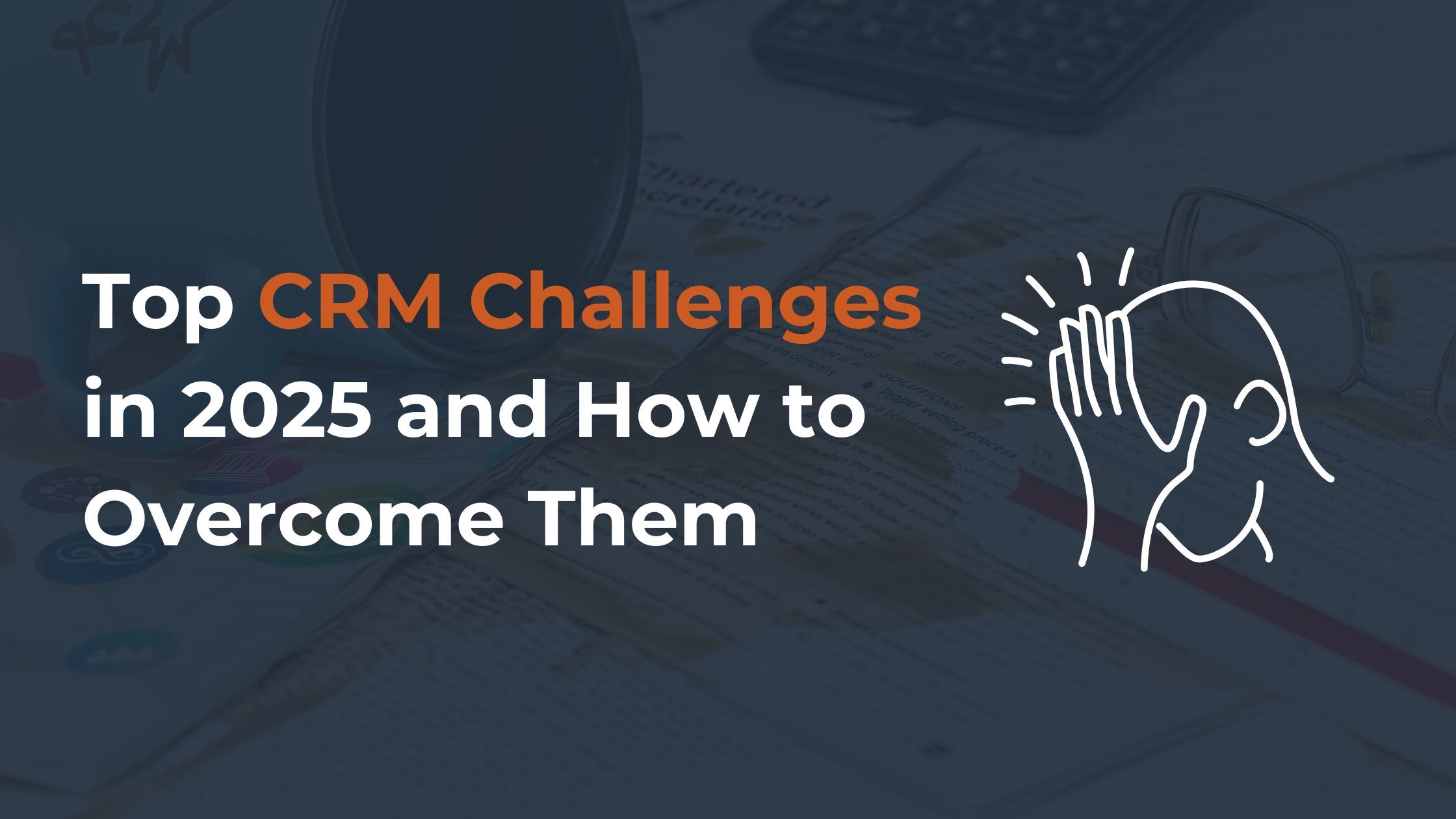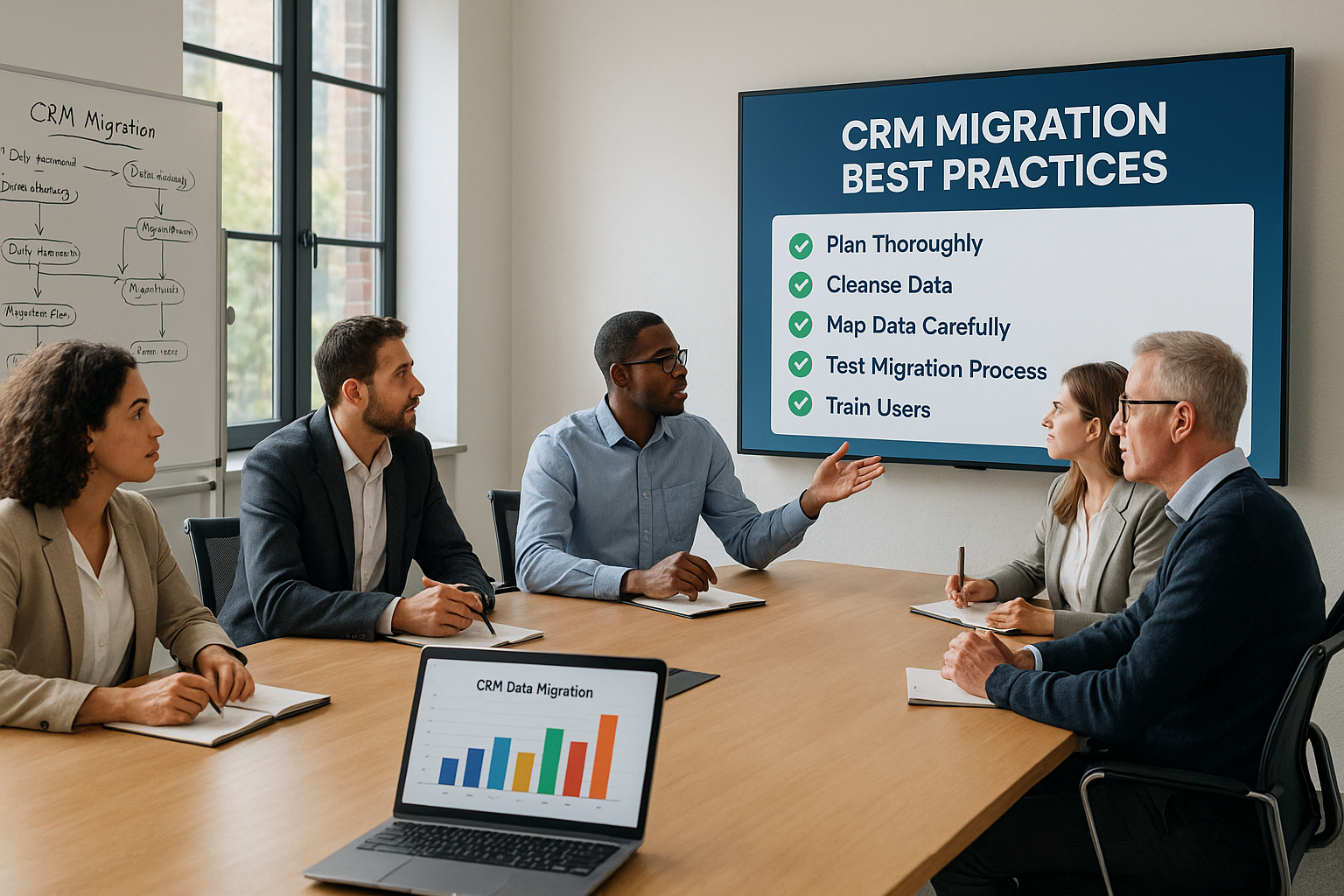Table of Content
- Why Addressing CRM Challenges Is Critical for Business Success
- Common CRM Challenges Businesses Face
- CRM Problems Impacting Business Performance
- What Are the Challenges of CRM Implementation?
- CRM Mistakes to Avoid
- Overcoming CRM Challenges: Best Practices
- Key Takeaways and Final Thoughts on CRM Challenges
Why Addressing CRM Challenges Is Critical for Business Success
When your CRM works smoothly, it drives better decision-making, stronger relationships, and higher ROI. But when it’s plagued by technical, operational, or data-related issues, the consequences ripple across every department. In 2025, customer expectations are rising faster than ever. People want personalized, real-time experiences across channels, and they’re quick to leave brands that can’t deliver. A poorly optimized CRM limits your ability to meet these demands.
Unaddressed CRM challenges also hurt internal productivity. Sales teams waste hours navigating messy pipelines, marketers struggle to trust segmentation data, and support reps can’t access the context they need to resolve issues efficiently. The result? Slower processes, frustrated employees, and lost revenue.
Moreover, as more businesses invest in AI-driven CRM features, data management and integration issues become even more critical. Without clean, centralized data, AI recommendations are inaccurate, and automation becomes one of the problems with CRM.
Common CRM Challenges Businesses Face

While CRM technology continues to evolve, many businesses still struggle to realize its full value. Whether due to strategic misalignment or technical complexity, certain obstacles repeatedly prevent companies from leveraging CRM systems to their advantage. The following are the most typical CRM challenges that firms encounter.
Low User Adoption Rates
Even the most advanced CRM is useless if your staff does not use it on a regular basis. Low user adoption is a long-standing issue that persists in 2025, especially as systems become more feature-rich and complex.
Sales reps often see CRM tools as time-consuming "admin work" rather than productivity boosters. Marketing teams may bypass CRM features in favor of external tools. And leadership may underestimate the training and change management required for successful onboarding.
How to fix it:
- Choose user-friendly CRMs with intuitive interfaces.
- Involve end-users in the selection process.
- Provide tailored training and ongoing support.
- Connect CRM usage to outcomes like faster sales cycles or better commission tracking.
Data Quality and Management Issues
The explosion of digital touchpoints like chatbots, web forms, social DMs, e-commerce, and support channels means businesses are collecting more customer data than ever. But that data is often inconsistent, duplicated, or outdated.
Poor data quality undermines your segmentation, reporting, personalization, and AI-driven insights. It also frustrates teams who can’t trust the information they’re working with.
How to fix it:
- Set clear data governance policies.
- Regularly clean, deduplicate, and validate CRM records.
- Use integrations and automation to reduce the need for manual data entry.
- Consider adding a data steward or using a data quality tool to maintain accuracy.
Integration Difficulties with Other Systems
CRMs must integrate seamlessly with marketing platforms, help desks, accounting software, e-commerce tools, and more. Businesses often use dozens of cloud-based apps, and getting them to "talk" to the CRM is still a major hurdle.
Without proper integration, teams operate in silos. Data is scattered across systems, automation breaks down, and customer experiences become fragmented.
How to fix it:
- Choose a CRM with robust API capabilities and pre-built connectors.
- Use iPaaS tools like SyncMatters to streamline and centralize integrations.
- Prioritize real-time, two-way sync where possible to avoid lags or conflicts.
Lack of Customization and Flexibility
Every business has unique workflows, roles, and customer journeys. Unfortunately, many out-of-the-box CRMs don’t match those nuances that create one of the challenges of CRM systems. Teams are often forced to adapt their processes to fit rigid software, rather than the other way around.
A one-size-fits-all CRM can slow down adoption and limit innovation. Teams may resort to workarounds, spreadsheets, or shadow IT tools.
How to fix it:
- Choose a CRM with customizable features (custom fields, workflows, permissions, dashboards).
- Look for low-code/no-code platforms that empower non-technical users to build what they need.
- Work with CRM consultants or admins to tailor the system to your exact processes.
CRM Problems Impacting Business Performance

When CRM systems fall short in execution, the consequences aren’t limited to IT departments; they directly affect revenue, customer satisfaction, and team productivity. Below are critical CRM-related issues that can quietly but significantly undermine business performance.
Inadequate Training and Support
Rolling out a new CRM or upgrading to advanced features is about transforming how your teams work. Unfortunately, many organizations overlook the importance of CRM training and ongoing support.
Without clear guidance, users may misunderstand the platform’s capabilities, misuse core features, or revert to manual methods outside the CRM entirely.
When users aren’t properly trained, data accuracy drops, CRM adoption declines, and the return on your CRM investment is limited. Teams are confused, and leadership has lost trust in CRM reporting.
How to fix it:
- Provide role-specific training during onboarding and after updates.
- Offer on-demand resources (videos, knowledge base, live chat).
- Choose a CRM vendor that includes strong customer support and community access.
Overcomplicated User Interfaces
Many customer relationship management systems have evolved into powerful all-in-one platforms, but with great power comes great complexity. Users in sales, marketing, and service roles often struggle with cluttered dashboards, redundant fields, and workflows that require too many clicks.
Complex interfaces slow users down, reduce satisfaction, and increase errors. When it takes too long to log notes, update a deal, or run a report, people disengage or worse, abandon the CRM altogether.
How to fix it:
- Choose a CRM with a modern, clean UI tailored to different user roles.
- Customize dashboards to display only the information relevant to each team.
- Regularly audit your CRM layout to eliminate unnecessary fields.
- Use automation and templates to reduce manual data entry and clicks.
Poor Mobile Accessibility
In a hybrid and remote-first world, CRM access on the go is a necessity. Field reps, support agents, and even executives need mobile tools that are fast, intuitive, and fully functional.
Yet many CRMs still treat their mobile apps as afterthoughts, with limited functionality, slow load times, or disconnected offline modes.
Poor mobile access leads to delayed follow-ups and a lack of real-time updates. It also creates friction in fast-paced environments like sales calls, events, or service visits.
How to fix it:
- Choose a CRM with a fully featured mobile app and offline capabilities.
- Ensure mobile UI is designed for usability (quick note-taking, call logging, and task management).
- Encourage mobile adoption with quick training and mobile-first workflows.
What Are the Challenges of CRM Implementation?

Implementing a new CRM is a major project that touches nearly every part of your organization. The most typical CRM installation challenges include cultural, financial, and operational errors.
Resistance to Change
People are naturally hesitant to embrace change, especially when it threatens to disrupt their established routines or requires them to learn new systems. CRM implementations often trigger this resistance because they impact daily operations, require time to learn, and may feel imposed by leadership without adequate context.
This is particularly true in industries where legacy systems or manual processes have long been the norm. Sales reps may fear micromanagement, marketers may prefer their third-party tools, and support teams may worry about losing efficiency in the short term.
How to overcome it:
- Involve team leads early in the selection and planning process.
- Clarify the "why" for the CRM change.
- Offer hands-on demos, Q&A sessions, and feedback loops during rollout.
- Recognize and reward early adopters who champion the system.
Budget Constraints
CRM costs go beyond monthly subscriptions. Licensing, custom development, integration work, user training, support, and system maintenance all add up. In 2025, organizations face even more pressure to justify tech investments, given the growing complexity of martech stacks, economic fluctuations, and evolving security needs.
The challenges of CRM with funding lead to shortcuts: limited functionality, poor implementation, no post-launch support, or underutilized integrations. Over time, this not only frustrates users but also results in a CRM that fails to meet your business goals.
How to overcome it:
- Create a realistic implementation budget that includes all hidden costs.
- Prioritize must-have features for phase one and roll out advanced capabilities later.
- Explore modular or scalable CRM platforms that grow with your business.
- Use ROI forecasting to make a stronger business case for full investment.
Misalignment with Business Processes
CRM systems should fit into how your teams actually work, not the other way around. But when implementations are rushed, templated, or handled by external consultants with little knowledge of your operations, critical misalignments occur.
For example, if a sales team’s deal stages don’t match what’s in the CRM, forecasting becomes inaccurate. Or if customer service reps can’t access a customer’s purchase history easily, they’re less effective at issue resolution.
How to overcome it:
- Map your core business processes before selecting or configuring your CRM.
- Involve sales, marketing, customer service, and ops teams in the design phase.
- Choose a CRM that offers flexible customization or industry-specific templates.
- Run test scenarios or pilot programs to refine the setup before full deployment.
CRM Mistakes to Avoid

Here’s a look at some of the most damaging CRM mistakes and how to steer clear of them.
Neglecting User Feedback
One of the most frequent errors is designing a CRM system in isolation, without involving the people who are expected to use it daily. When businesses configure their CRM based solely on executive requirements or vendor recommendations, they create systems that may look good on paper but fail in practice.
Users will find the workflows clunky, the interface unintuitive, and the processes misaligned with their actual needs. As a result, adoption suffers, and employees revert to spreadsheets or alternative tools, defeating the purpose of the CRM entirely.
Underestimating Data Security Needs
What are the challenges of CRM when it comes to data security? In an era where data privacy laws are becoming stricter and cyber threats more sophisticated, data security is mission-critical. Still, many organizations treat security as an afterthought when implementing or customizing their CRM. They fail to set proper user permissions, neglect encryption protocols, or integrate third-party tools without checking for vulnerabilities.
This kind of oversight opens the door to data breaches, compliance violations, and reputational damage. Worse, it can create internal friction when teams discover unauthorized access to sensitive customer or financial data.
Failing to Set Clear Objectives
A surprising number of CRM projects begin without clearly defined goals. Companies invest in these systems hoping they’ll magically improve sales, customer retention, or marketing performance, but without specifying how. Teams don’t know what CRM success looks like, and leadership can’t measure ROI.
Over time, the CRM loses credibility and becomes just another system collecting dust. Successful CRM adoption starts with a focused vision. When goals are clearly defined, every configuration, workflow, and dashboard can be built with purpose and the platform becomes a strategic tool.
Overcoming CRM Challenges: Best Practices
CRM problems are inevitable, but they’re far from insurmountable. By focusing on people, processes, and adaptability, companies can turn even the most frustrating CRM pain points into opportunities for improvement. Below are some of the best practices that successful organizations are using to overcome CRM challenges and build a system that works for their teams and their customers.
🔄 Regular Training and Support
Even the best CRM software in the world won’t deliver results if your team doesn’t know how to use it properly. Many CRM issues stem from a lack of understanding or confidence in the system. Initial onboarding is important, but it’s not enough. Teams need ongoing training to keep up with feature updates, automation tools, and evolving workflows.
Companies that succeed with CRM make training a continuous process. They offer role-specific sessions, easy access to support, and regular refreshers to keep everyone aligned. Just as importantly, they create a culture where asking for help isn’t a weakness, but is encouraged.
🔗 Ensuring Seamless Integration
A CRM that operates in isolation is little more than a database. Today’s businesses rely on a complex ecosystem of tools, including marketing automation platforms, e-commerce systems, customer support software, analytics tools, and more.
The best practice to solve this one of the problems with CRM software is to treat integration as a strategic priority from the very beginning of your CRM planning. Identify your essential systems and ensure that your CRM solution either has native integrations or can connect via APIs or an iPaaS like SyncMatters. When systems sync in real-time and data flows freely between departments, everyone operates from the same source of truth.
🛠️ Customizing CRM to Fit Business Needs
No two businesses operate the same way, which means no out-of-the-box CRM solution will work perfectly without some level of customization. One of the most common reasons CRM systems fail is because they’re implemented as generic tools, rather than being tailored to the specific goals, processes, and terminology of the organization.
Customization is about more than just aesthetics. That might mean creating custom deal stages, building unique dashboards for each team, automating repetitive tasks, or designing custom fields that reflect your sales cycle or customer journey. When your CRM reflects how your business works, it becomes a tool that supports performance rather than a system users have to fight against.
Key Takeaways and Final Thoughts on CRM Challenges

As CRM platforms become more powerful, interconnected, and intelligent, the CRM problems have also grown more complex. From user resistance and data chaos to CRM integration headaches and unclear goals, the obstacles are real, but they`re also solvable.
If your organization is struggling with disconnected systems, low adoption, or messy CRM data, tools like SyncMatters can make a massive difference. As a powerful iPaaS solution, SyncMatters enables seamless, secure synchronization between over 55 CRMs. SyncMatters ensures that your teams always have accurate, actionable data exactly where they need it.
Contact us to schedule a free consultation regarding your individual case!




